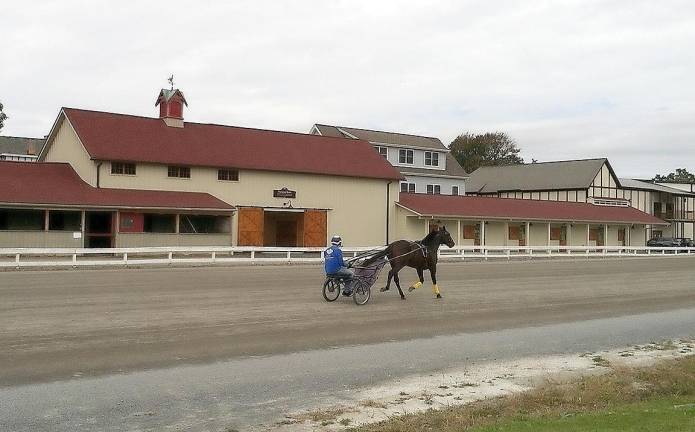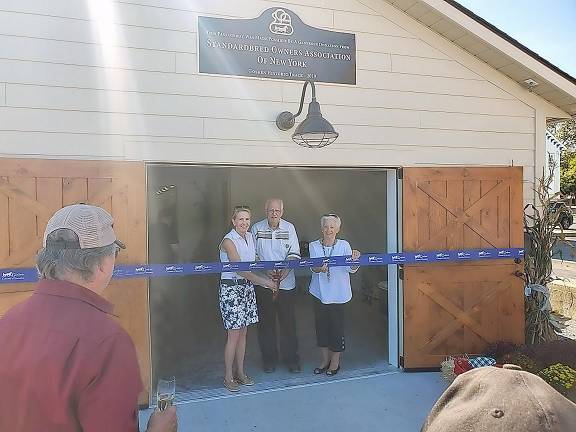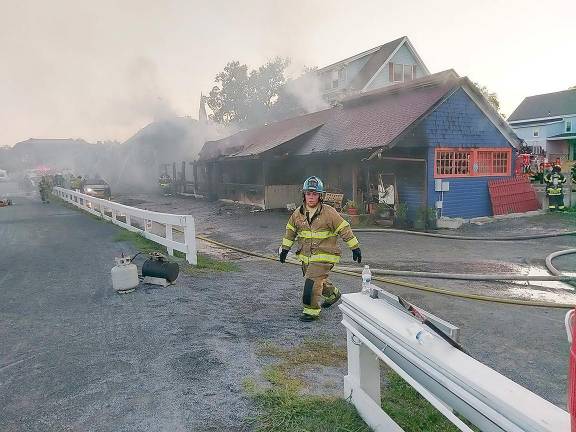New barn and stalls rise from the ashes of Historic Track fire
Goshen. Ribbon-cutting heralds the preservation of a tradition, two years after catastrophe struck the track. The board of directors thanks all the many people and organizations that helped to restore this historic jewel.



A little more than two years after a devastating fire, Goshen Historic Track added a new page to its vibrant history.
The world’s oldest active harness racing track and historic jewel of Orange County hosted a ribbon-cutting ceremony to celebrate a newly constructed barn and horse stalls on the site of the old BOCES barn that was partially destroyed by fire on Aug. 23, 2017.It was so named because it was an extension of the Board of Cooperative Educational Services when it functioned as a training center focusing on equestrian care and farm management.
Since then, working closely with preservation architects and engineers from Goshen-based LAN Associates, the Historic Track and the Harness Racing Museum & Hall of Fame have endeavored to replace the lost structures with the goal of preserving much of their original character while providing the museum with safe housing for its valuable artifacts.
Thanks to a donation from the Messenger and Fleming families, and a matching grant from New York State, the new barn was renamed the “Fleming Barn,” in honor of Charles M. Fleming, a distinguished Standardbred trainer and driver at the famous track in the 1950s and 1960s.
The ribbon-cutting ceremony on Sept. 29 heralded the preservation of a tradition. Goshen is known as the "Cradle of the Trotter" because it was in that town, circa the 1840s, that the first American Standardbred horses were foaled, trained, and bred for the then-uniquely American sport of harness racing. The turnout crowd included Steve Brescia, county legislator and mayor of Montgomery; John Vero, county legislator; and Joseph Faraldo Esq., president of the Standardbred Owners Association of New York.
There are also plans for expanding the functionality of the Historic Track to accommodate a host of community-oriented services and events.